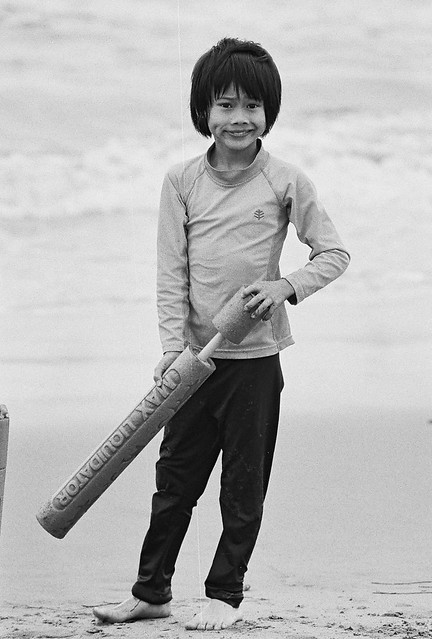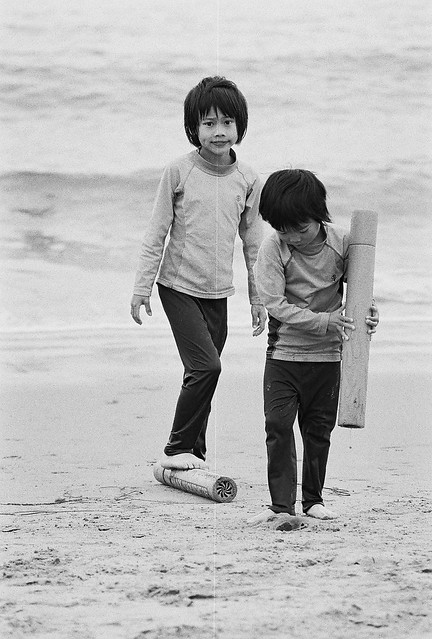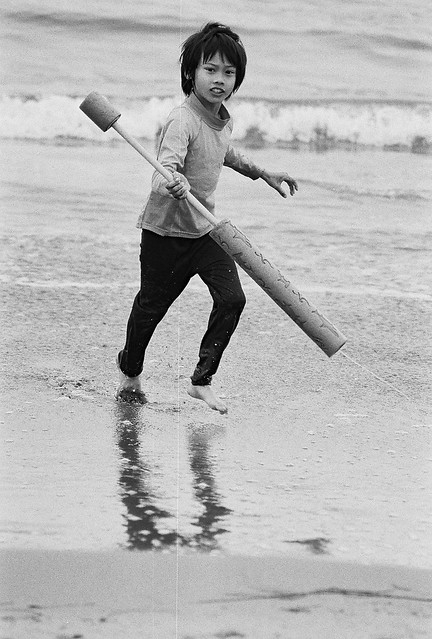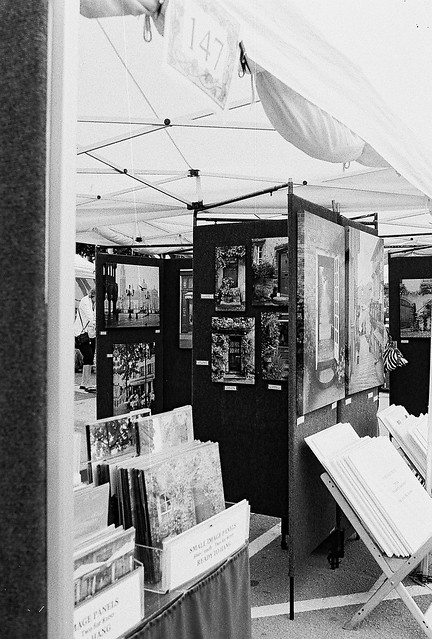Hin,
Do you have a loupe? If you do, carefully examine both the back and the emulsion side of the negative. A scratch will be obvious and will continue outside the frame. As noted above, the usual suspects are the pressure plate in the camera back and the lip of the film canister. Beyond that are scratches that are introduced in processing.
What I find interesting is that:
- For image 1, the marks are not parallel (they diverge to the right) and the top one is not completely straight.
- The spacing is wider/narrower between frames
- The position of the marks on the frame changes between frames
- On the last image, the marks are quite wide and run diagonal across the frame
More typical for sand or grit on the canister light trap is a line that runs straight through several frames parallel to the direction of film travel. The marks on your images look more like what I would get back in the days when I was still using a squeegee after hanging the film to dry.
Scratches introduced during processing can look like pretty much anything. Possible causes during/after processing include:
- Dust/grit in the processor film path
- Dust/grit in the scanner film path (for strip feed scanners)
- Careless handling (dragging over counter top, grit on technicians gloves, and such)
- Squeegee marks
- Insertion into negative sleeves or pages
A third possible cause would be from an older bulk loader with a fiber light trap (Lloyd type) or loading from a Watson loader with the light trap in the "closed" position. (Yes, that is possible and no, it is not a good idea.)
Steve
BTW...Could not help but notice that these are beach pictures. Any chance that you changed film out on the beach and that a breeze was blowing while you were doing so?


 Similar Threads
Similar Threads 



























